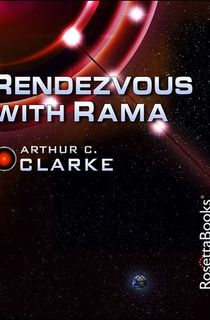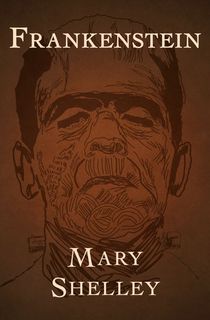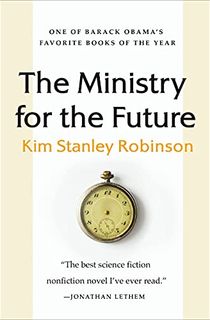Science fiction is the branch of speculative fiction usually concerned with the future of science and technology. It’s a hugely imaginative and ever-expanding field with numerous subgenres, tackling everything from alien civilizations, alternate history and genetic engineering, to coming-of-age journeys across dystopias and romances that span the boundaries of space and time.
Alongside older subgenres such as hard sci-fi and military SF, a number of new subgenres have burgeoned, such as silkpunk (that combines silk and the aesthetics of Asian-Pacific culture) and science fantasy, where elements of fantasy and science fiction are plausibly blended together.
Whether you’re keen to brush up on your genre history or expand your reading list, our guide to classic SF subgenres with examples has got you covered!
Science Fiction Subgenres and Classic Examples
Afrofuturism
Afrofuturism books explores themes from the Black diaspora to imagine liberated futures.
Author Octavia E. Butler is often rightly heralded as an influential figure in Afrofuturist literature, but as The Portalist's Anifowoshe Ibrahim writes, the genre has been around for longer than there's been an official term for it.
Afrofuturism is also distinct from Africanfuturism. The latter subgenre was defined by Binti author Nnedi Okorafor, and does not focus its narratives around the West.
Alien Invasion
For a lot of people, the very term “science fiction” conjures up images of aliens, extrasolar planets and far-future civilizations. Given that humanity’s space exploration and travel pursuits hasn’t yielded any signs of extra-terrestrials (so far), the chances of an actual alien invasion are extremely unlikely, though that hasn’t deterred writers from exploring the possibility in a multitude of ways.
Classic Example of the Alien Invasion Subgenre

Rendezvous with Rama
A key text to read in this sub-genre is Rendezvous With Rama (1973) by Arthur C. Clarke which narrates the experiences of a group of human explorers that intercept Rama, an alien starship that had ventured into the Solar System. It won both the Hugo and Nebula awards, and even led to the formation of an actual space program that detects asteroids and other near-Earth objects on Earth-impact trajectories.
Alternate History
Alternate history books ask what it would look like today if history had happened very differently.
What if, as in Philip K. Dick's The Man in the High Castle, the U.S. lost the war against the Axis Powers? What if an enclave of safety had been created in Africa for survivors of the slave trade, as in Nisi Shawls' Everfair?
Alternate history books take these compelling questions and use them to build depictions of our world that are typically complex and compelling.
Apocalyptic and Post-Apocalyptic Science Fiction
Both subgenres are heavily concerned with the prospect of civilizational collapse, due to natural or man-made causes. While apocalyptic fiction deals with the event of apocalypse and the efforts to stop it, post-apocalyptic narratives such as Emily St. John Mandel’s Station Eleven (2014) deals with the plight of survivors as they band together to brave the loneliness, traversing across a ravaged landscape.
Classic Example of the Post-Apocalyptic Subgenre

I Am Legend
Another important book that set the tone for post-apocalyptic fiction is Richard Matheson’s 1954 novel, I Am Legend. In it, a mysterious pandemic has wiped out the majority of Earth’s population, turning the few survivors into vampires. The novel has been adapted to film many times, including a Will Smith-starring action thriller, where the vampires are swapped for zombies.
Biopunk
Biopunk is the SF subgenre that’s chiefly concerned with the ramifications of bio-technology, such as genetic engineering and experimentation. Although the term was derived from cyberpunk aesthetics, stories that probe the limits of the human body had been published much earlier.
Classic Example of the Biopunk Subgenre

Frankenstein
Mary Shelley's 1818 novel, Frankenstein, can be regarded as one of the earliest proponents of biopunk fiction that deal with the horrific consequences of a knowledge-hungry scientist creating life (Frankenstein’s monster) but shirking off all responsibility to nurture or care for it. Told in the form of a nested narrative with diary entries and letters, the novel continues to be a relevant and thought-provoking read.
And if you’re keen on picking up some recent additions to the genre, I’d recommend Oryx and Crake (2003) by Margaret Atwood and The Windup Girl (2009) by Paolo Bacigalupi.
Solarpunk
A subset of the solarpunk art movement, this subgenre deals with environmental issues. But solarpunk also takes the “punk” attitude of its suffix, and imbues a rebellious spirit that is inherently optimistic.
Most works of solarpunk deal with communities facing environmental hardship, and building stronger relationships. For example, Kim Stanley Robinson’s Three Californias Trilogy rockets readers to 2065. The world has returned to its naturalistic “green” roots, but is on the verge of another industrial revolution that threatens to undo society's balance.
Another example is Cory Doctorow's 2017 novel Walkaway. In the book's world, many live in a dystopian society known as the Default. However, those who choose to leave the Default and make a world outside the cities can do so with relative ease.
Climate Fiction or Ecofiction
Given the ever-looming threat of global warming, climate fiction is an SF subgenre that’s rapidly gaining currency in both genre and literary markets. Also called cli-fi for short, this subgenre investigates climate change concerns, often set in our real world or a near-future where the effects of climate change are more pronounced.
Classic Example of the Climate Fiction Subgenre

The Ministry for the Future: A Novel
The 2020 standout novel, The Ministry for the Future by Kim Stanley Robinson with a strong ecological focus, explores a world where human beings have to adapt to a warmer climate. It’s a hugely relevant read, driving home the immediate impacts of the climate crisis and urging us to rethink our actions lest the novel’s reality turns into a near-future prediction.
Cyberpunk
Cyberpunk is one of the most essential and versatile (not to mention visually striking) sci-fi subgenres.
The perfect blend of dystopian future, retrofitted tech, and noir crime, cyberpunk explores cybernetics, transhumanism, and more progressive political concepts.
One of the seminal SF genres, the aesthetics of cyberpunk are usually described as a combination of “lowlife and high-tech”, exploring capitalist dystopias where huge strides in technology are juxtaposed with societal collapse.
Classic Example of the Cyberpunk Subgenre

Neuromancer
Published in 1984, Neuromancer by William Gibson played a key role in establishing cyberpunk as a genre. It follows the exploits of Case—once a talented and much-regarded hacker, now a low-level hustler—on a frenetic, death-defying mission.
Other works that solidified the subgenre include films like Ridley Scott’s Blade Runner (based on Philip K. Dick’s ground-breaking novel, Do Androids Dream of Electric Sleep?) and Akira (1988) based on the Japanese manga series by Katsuhiro Otomo. Moreover, cyberpunk fiction has also led to the development of newer subgenres, such as steampunk, solarpunk, dieselpunk and many more (yep, there are plenty of “—punk” genres out, with more being coined each year.
Generation Ship Sci-Fi
When humanity is ready to colonize space, we'll need a ship to help us survive the long journey to terraform distant habitable planets. That's where generation ship sci-fi comes in.
This subgenre usually takes place aboard a ship that will house would-be colonizers (sometimes also the last remnants of humanity) for generations, until they reach their distant destination.
Examples include the Noumenon trilogy by Marina J. Lostsetter, or Starship by Brian W. Aldiss.
Gothic Science Fiction
Gothic science fiction blurs the lines between dark atmosphere, horror, and Gothic principles.
Early examples of the subgenre include books like Mary Shelley’s Frankenstein and Robert Louis Stevenson’s The Strange Case of Dr. Jekyll and Mr. Hyde, which in their many decades of being adored have undergone universal acceptance into our literary canon. A more recent example includes Fevre Dream by George R.R. Martin.
Films like Alien and Event Horizon can also be considered Gothic science fiction due to their trademark desolation and grimness.
Hard Sci-Fi
Hard science fiction refers to the technical integrity of the science it's based on — not on the ease of the reading experience itself.
Hard sci-fi utilizes real-life science and space facts to spin extraordinary stories. Notable authors working in the subgenre include Timothy Zahn, Greg Bear, Arthur C. Clarke, and Isaac Asimov.
Because some of the biggest authors working in this space are male, there's a frequent misconception that hard sci-fi is a man's world — but many female authors have also helped define and evolve the subgenre.
Military Sci-Fi
Military sci-fi originated in the late 1800s and early 1900s, and explores the tech, politics, and philosophy of war across space and time. Classic works in the subgenre include The Forever War, by Joe Haldeman; Old Man's War, by John Scalzi; and Starship Troopers by Robert A. Heinlein, which featured soldiers outfitted in iconic mechanized exoskeletons.
Military science fiction explores how wars, combat mechanisms and military conflicts may evolve in the future, especially with the use of high-tech weaponry, robots and genetically-altered soldiers. Often such works carry a strong anti-war message while also emphasizing on the themes of heroism, duty and loyalty.
Classic Example of the Military Sci-Fi Subgenre

Ender's Game
Enders Game (1985) by Orson Scott Card is a classic SF novel where readers follow six-year-old Ender Wiggins, who believes he’s playing simulated war games on his computer but is actually a genetically-experimented-upon child genius who is also unsurprisingly, a highly valuable military asset.
Parallel Universe
The parallel universe sci-fi subgenre is just what it says on the tin — stories set in alternate universes and worlds that exist simultaneously alongside others.
Parallel universe books share a lot in common with alternate history. However, the major distinction is that the latter is typically set in our own reality, rather than another reality occurring concurrently. Notable books include The Light Brigade by Kameron Hurley, and This Is How You Lose the Time War, by Max Gladstone and Amal El-Mohtar.
Social Science Fiction
Social science fiction doesn’t pay as much attention to technology or space as other subgenres do. Rather, it speculates and obsesses about society. It is far more sociological and anthropological in its aims, with the primary lens being on human society’s interactions.
Many classics are part of this genre, such as Ray Bradbury’s Fahrenheit 451. A more recent example is Cormac McCarthy’s masterpiece, The Road. Though it is indeed post-apocalyptic, its focus is also on the social, and the splintering away of a human society after a reality-ending event.
Another example of the genre is J.G. Ballard’s Crash, which takes the fetishization of automobile crashes into an erotic social niche. By presenting such an odd and outlandish kink, Ballard’s social commentary addresses the merger of technology and desire.
Megan Angelo’s Followers takes the burgeoning career of social media influencer and the increasing digitalization of our social lives, to a near future where that digital life is more real than ever before.
Soft Sci-Fi
There are several different ways of defining soft sci-fi, but the genre is almost always compared to hard sci-fi. However, the two aren't as oppositional as they initially sound.
Like hard sci-fi, soft sci-fi can be intricately detailed, and science-based — but like social science fiction, it usually draws on soft sciences such as anthropology, rather than hard sci-fi like physics. In soft sci-fi, the internal logic of the story also doesn't need to necessarily make sense through our real-world lens (consider the science within Star Wars, for example).
Examples of the genre include Douglas Adams' Hitchhiker Guides books; the work of Ursula K. Le Guin; and Never Let Me Go by Kazuo Ishiguro.
Weird SF
Weird sci-fi can be characteristically hard to define. Frequently, it marries horror, sci-fi, and even fantasy elements for stories that are unsettling, left-of-center, and unforgettable.
Standout books include Annihilation by Jeff VanerMeer, and Perdido Street Station by China Mieville.
Space Opera
The precise definition of space opera varies based on who you ask, and can be as expansive as the galaxies the subgenre is set in.
Still, the basics include swashbuckling spacefarers; romance; intergalactic adventure; and twisting allegiances. Star Wars might be the IP that is most widely-accepted as a space opera, while others say that The Expanse fits the bill.
Notable space opera books include Shards of Honor, by Lois McMaster Bujold, or the Dune series by Frank Herbert.
Time Travel Science Fiction
One of the most evergreen SF subgenres, time travel stories chiefly play out a “what if” or “second chance” scenario, where a character acquires a device that lets them travel to the past or future—and do things differently, although their actions aren’t without consequences, as seen in long-running SF shows such as Doctor Who.
Classic Example of the Time Travel Subgenre

The Time Machine
Time travel can also be used to explore our planet’s ancient pasts or even the far-future—the latter concern is taken up by H.G. Wells, often regarded as the father of science fiction, in his influential novel, The Time Machine (1895). In it, our time traveler finds himself in a post-apocalyptic, slow-dying Earth where two races dominate—the surface-dwelling, sun-loving Eloi and the sinister, subterranean Morlocks—usually interpreted as a metaphor for the class struggle.



